It’s our very great hope that you will all be enthralled, and informed by, this article about these 5 Appalachian Mountains Species we present to you here. We certainly enjoyed compiling it for you. This region teems with life in countless forms and varieties.
Obviously, some of the species listed here appear more or less frequently than others, though. Others, meanwhile, also appear in many other parts of the country, while one of them appears nowhere else on earth, natively! So, sit back, relax, and enjoy the read.
Black Widow
Black Widow Facts
- Leading off this article about 5 Appalachian Mountains Species comes the world-renowned arachnid known simply as the Black Widow.
- Perhaps most notably for most individuals, the amazing invertebrate represents an extremely dangerous variety of spider. Placed in the Latrodectus genus, many of these reclusive arachnids are also known to some people simply as widow spiders.
- Experts also currently list 32 known species in this genus, spread throughout much of the world. The three species endemic to North America remain the most commonly known, though. Each of these arachnids shares many physical traits.
- The common name for these dangerous invertebrates derives from the high prevalence of sexual cannibalism in the Black Widow. After mating the larger female commonly, though not always, kills and then feeds on the smaller male.
- The toxin of its bite further remains considered by most experts to be especially dangerous. The invertebrate earns this distinction due to the presence of the neurotoxin latrotoxin. This represents an especially dangerous type of venom.
- Only the bite of the female typically presents any danger to humans, however. That’s because she generally has far larger venom glands than her much smaller male counterpart. Despite its reputation, though, few bites actually result in fatalities.
- Presently, the majority of species grouped under this common name continue to have stable populations. The IUCN, therefore, does not list them on its Red List. These amazing spiders nevertheless face the same threat from climate change as we all do.
Black Widow Physical Description
Not surprisingly, the various species of Black Widow attain similar physical sizes. However, this remarkable arachnid typically displays a significant amount of sexual dimorphism. This physiological characteristic manifests itself in terms of both color patterns and size.
That’s partly because the female attains an average length of about 1.4 in (3.5 cm), whereas the male stays much smaller. He most commonly only reaches an average length of roughly 0.7 in (1.75 cm). The males also do not display the characteristic red hourglass.
Color patterns also vary relatively significantly between the various forms. All members of this genus, however, appear predominantly black in color. The females of each species, though, all display a very prominent red hourglass shape on their abdomens.
- Kingdom: Animalia
- Phylum: Arthropoda
- Class: Arachnida
- Order: Araneae
- Family: Theridiidae
- Genus: Latrodectus
Black Widow Distribution, Habitat, and Ecology
The three species of Black Widow that evolved as native to North America remain the best known of the varieties. The incredible genus also thrives in many other areas of the world, though. In fact, the various species inhabit every continent of the world, except Antarctica.
Quite understandably, given its nearly global distribution, habitat types vary widely. Nevertheless, members of the genus most commonly live in temperate and tropical climates. A few of them, though, even live in extremely arid regions of the world.
Individuals usually build their webs in locations such as around rubble, small trees and bushes, in the wild. But, when found inside of human habitations, webs usually appear in isolated areas, such as attics and garages. This fortunately makes encounters rare.
When a human gets bitten, the venom of a Black Widow commonly causes a condition known as latrodectism. Experiences include profuse sweating, vomiting, muscle rigidity, and extreme pain. These symptoms typically persist for 3-6 days, but can last longer.
All currently known members of this genus hunt as ambush predators, laying in wait in the web. It feeds opportunistically, making a meal of any small creature caught in its web. Its diet, however, typically consists of mosquitoes, grasshoppers, beetles, and such.
Eastern Diamondback Rattlesnake
Eastern Diamondback Rattlesnake Facts
- Appearing next in the compilation of 5 Appalachian Mountains Species is one that, while certainly present, is now rare, the Eastern Diamondback Rattlesnake.
- Notably, the name for this snake applies to a reptile that’s a highly venomous species of pit viper. Among professionals, such as researchers, though, its more frequently known by its technial name. That’s the term of the Crotalus adamanteus.
- It received that name due to the work of the respected French naturalist, Ambroise Marie François Joseph Palisot. He made the first formal recogntion of the reptile as a separate and distinct species. This noteworthy action he accomplished in 1799.
- This dangerous but magnificent rattlesnake also holds another impressive status. That’s because it ranks as the heaviest venomous snake on two continents. Despite its great weight, however, the animal does not qualify as the longest of them.
- For a variety of reasons, the IUCN currently lists it as a species of Least Concern on its Red List. This status currently remains under review, however. This reconsideration occurs due to ongoing changes in conditions within the range of the snake.
- Estimates place its population at only 3% of what it once was. Habitat loss and highway mortality, coupled with a low reproductive rate form the primary factors in its decline. Climate change may soon threaten the Eastern Diamondback Rattlesnake, too.
Eastern Diamondback Rattlesnake Physical Description
The amazing creation of nature and evolution named the Eastern Diamondback Rattlesnake easily constitutes a physically imposing reptile. It holds this claim due to a very specific reason, though. That’s due to its sheer massiveness, for a venomous reptile.
Variations in size between individuals do sometimes,occur, however. This holds true partly due to the fact that this amazing creature displays a slight degree of the physiological characteristic of sexual dimorphism. In this, it’s like most of its relatives, though.
In its case, this principle manifests in terms of overall size. The male typically attains a slightly greater length and weight than the female. The difference remains quite small, though. Due to this, the two genders are usually considered to be of the same size.
A typical length for this incredible reptile thus equals roughly 5.5 ft (1.7 m). The typical adult generally weighs about 10 lb (4.5 kg). Yet, exceptional specimens occasionally reach lengths equaling as much as 7.8 ft (2.4 m). Most of the exceptional-sized individuals are male.
The Eastern Diamondback Rattlesnake also presents a striking image in color pattern. That’s because this typically consists of shades of brown, yellow, gray, and olive. This pattern develops overlaid with a series of 24-35 black or dark brown diamond shapes.
- Kingdom: Animalia
- Phylum: Chordata
- Class: Reptilia
- Order: Squamata
- Family: Viperidae
- Genus: Crotalus
- Species: C. adamanteus
Eastern Diamondback Rattlesnake Distribution, Habitat, and Ecology
Unfortunately for those who appreciate Nature, the Eastern Diamondback Rattlesnake evolved as endemic to a very limited territorial range. This native zone of habitation only includes the southeastern United States. Even there, it only appears in a limited area, though.
More specifically, due to these limitations, its natural range only extends along the coastal plain. More specifically, that runs from eastern North Carolina to southeastern Louisiana. The snake further inhabits some portions of the range in greater numbers than others.
Due to this natural tendency, the increasingly rare animal appears to be most numerous in the states of Alabama and Georgia. Unfortunately for those who love Nature, the reptile’s now offically considered to be extinct in the states of North Carolina and Louisiana.
It’s best known for its relative toxicity. A typical bite produces 3-4 times the amount of venom needed to kill an average human. Antivenom is available in most medical facilities throughout its range, however. Therefore, attacks usually only become fatal if untreated.
The dangerous but impressive animal also remains quite adaptable in character. In point of fact, it frequently shows that it will inhabit a wide range of habitat types. These regions include pine forests, sandhills, coastal hammocks, and most types of swampy areas.
The Eastern Diamondback Rattlesnake also displays yet another distinctive characteristic. This intriguing animal typically resides within burrows previously excavated by other animals. From there, it forages for prey, mainly consisting of smaller animals.
Flame Azalea Facts
- The third species making its appearance among our choices for inclusion in this article about 5 Appalachian Mountains Species is the stunning Flame Azalea.
- This creation of Nature and evolution most frequently and wholly understandably, goes by the common name for understandable reasons. It’s scientific name, however, is the extremely hard to pronounce term of Rhododendron calendulaceum.
- Perhaps most notably, the mesmerizing Angiosperm stands out from the majority of related species for its exquisite beauty. That occurs partly due to its famous, among Nature lovers, at least, wonderful large, showy, funnel-shaped flowers.
- These incredible flowers conceal a few remarkable secrets, however. For one, these blooms actually develop almost entirely without scent. Among similar related species, this stands out as a surprising difference, given the strong fragrance of the others.
- Its beautifully colored blooms sometimes actually appear either before the leaves do, or simultaneously with the leaves and the flowers. Very few flowering plants display that tendency. This represent yet another manner in which it distinguishes itself.
- The great beauty conceals one more secret, and a dark one. That holds true due to the fact that all parts of the Flame Azalea evolved as highly toxic. In fact, its toxicity remains so great, honey produced by bees from these plants may be fatal to humans.
- Fortunately for it, though, the beautiful plant appears to be maintaining a population base that’s both stable and sufficient. This trend also seems to hold true throughout the entirety of its native range. The IUCN, therefore, currently has no listing for it.
Flame Azalea Physical Description
The stunning Flame Azalea represents a stunningly beautiful upright-branched deciduous shrub. It also impresses due to it sheer size. This marvel of evolution also generally, under favorable conditions, at least, attains a much larger physical size than related varieties.
In fact, some specimens of the visually impressive flowering species attain heights measuring up to as much as a remarkable12 ft (3.65 m). Its impressive physical statistics, however, do not simply end with its mere height. It has yet more wonders to amaze us with.
That’s because, due to its somewhat unique growth patterns, individual plants often measure as much in width as they do in height. This attribute alone distinguishes it from many relatives. The remarkable work of Nature thus develops a truly impressive appearance.
The lovely foliage of the Flame Azalea typically develops as a dark green. Meanwhile, the copious numbers of flowers it produces vary in color across a range of shades of orange and red. These numerous flowers also typically develop in clusters of five or more.
- Kingdom: Plantae
- Phylum: Angiosperms
- Class: Eudicots
- Order: Ericales
- Family: Ericaceae
- Genus: Rhododendron
- Species: R. calendulaceum
Flame Azalea Distribution, Habitat, and Ecology
Regrettably, the magnificent Flame Azalea inhabits a very limited portion of the globe. That’s due to the fact that it evolved as native to a rather specific region of the world. That area consists solely of a small portion of the United States, in North America.
It’s habitation range restrictions do simply end there, however. In this instance, the very nature of the evolutionary wonder work against it. That’s because that restricted territorial range consists only of the southern portions of the Appalachian Mountains.
But, even there, this variety of Rhododendron possesses highly specific requirements. This holds true because it most commonly appears in the numerous grassy balds that dot the surrounding region. There, it easily creates a striking visual display for all.
Although somewhat less commonly, it also appears in areas of woodland. Not content to rest, it seems Nature provided it yet another distinction. Much like most members of the heath family, this amazing beauty grows most prolifically in acidic soil.
This somewhat uncommon trait helps the dazzling, if complicated, Flame Azalea, thrive in otherwise inhospitable regions. For reasons that remain undetermined, the plant further appears to be a particular favorite of the Golden Northern Bumblebee.
Cougar
Cougar Facts
- Placing in the fourth spot in this compendium of 5 Appalachian Mountains Species, the gorgeous Cougar does so only due to random selection.
- The short term for the mammal serves as but one of the common names assigned to this magnificent wild feline. It other common names include the mountain lion, puma, painter, panther, and catamount. The variety of names occur due to its wide range.
- Scientists, meanwhile, know the stunning feline by the term Puma concolor. Regardless of the name one uses for it, the animal remains one of the most recognizable of the smaller wild felines. It’s also the most widespread of any in its Hemisphere.
- The renowned Swedish zoologist, Carl Linnaeus, holds the credit for the first acknowledged scientific recognition and naming of the species. This achievement he accomplished in 1771. The name he chose, however, later changed several times.
- This breathtaking feline obviously evolved as a slender and agile member of the cat family. It also holds a unique distinction. That’s because, though not technically one of the so-called big cats, it’s the fourth largest of all known wild felines.
- Even though its population doesn’t compare to past numbers, this appears stable throughout its range. The IUCN, therefore, currently lists it as Least Concern. It does face several threats, including the ever-increasing danger posed by climate change.
Cougar Physical Description
Unlike some species, the breathtaking Cougar actually impresses us with its size, in addition to other factors. The animal also, however, displays the physiological characteristic of sexual dimorphism. In this, in fact, it mirrors virtually all know types of feline, wild and domestic.
In its specific case, though, this trait manifests in terms of size, with males of the species attaining slightly greater lengths and weights. Mature adults of both genders, however, vary greatly in height, averaging between 24 -35 in (60 – 90 cm) tall at the shoulders.
In terms of length, meanwhile, is where the size differences appear the most obvious. The males of this feline attain an average nose-to-tail length equaling roughly 7.9 ft (2.4 m). Females, however, generally reach an overall length of about 6.7 ft (2.05 m).
It bears pointing out, though, that of this total measurement, the tail itself comprises 25 – 37 in (63 – 95 cm) of this. The males, meanwhile, typically reach a weight of between 115 – 220 lb (53 – 100 kg). Females, on the other hand, average 64 – 141 lb (29 – 64 kg).
The Cougar also boasts other impressive statistics. Its rounded head displays erect ears. The feline has a jaw and forequarters powerful enough to grasp large prey. It also has five retractable claws on the forepaws, and proportionately the largest hindlegs in the cat family.
- Kingdom: Animalia
- Phylum: Chordata
- Class: Mammalia
- Order: Carnivora
- Family: Felidae
- Genus: Puma
- Species: P. concolor
Cougar Distribution, Habitat, and Ecology
Surprisingly, the gorgeous Cougar inhabits a comparatively large section of the globe. More precisely, it appears in a range that extends from parts of Canada to the Andes in South America. Its greatest concentration, however, remains concentrated in North America.
Aiding in its continued existence as a species is the fact that it evolved as a highly adaptable creature. This flexibility allows it to inhabit a wide variety of habitat types within its native range. Most notably, though, these include forests, lowlands, mountains, and arid climates.
Its incredible physique allows the impressive feline some of the greatest leaping and short-sprint ability of any animal. Individuals have the ability to jump as high as 18 ft (5.5 m) in one bound. These also evolved the capacity to leap as far as 40-45 ft (12-14 m) horizontally.
But Nature did not stop there. This animal also boasts some extremely impressive speeds. The top running velocity of the animal also ranges between 40-50 mph (64-80 kph). They remain, however, best capable of short, powerful sprints as opposed to long chases.
The remarkable Cougar also feeds entirely as a carnivore. As a supremely successful generalist predator, the mammal further feeds opportunistically. Specimens therefore eat any animal they can catch, from insects to large ungulates in excess of 1,100 lbs (500 kg).
Investigations in Yellowstone National Park showed that elk, followed by mule deer, were the animal’s primary targets. The mammal further evolved as adept at climbing, allowing it to evade canine competitors. Although not strongly associated with water, it does swim.
Wood Frog
Wood Frog Facts
- Closing out this article about 5 Appalachian Mountains Species is the surprising amphibian known by the deceptively simple name of the Wood Frog.
- This unassuming seeming creature holds the common name it does for excellent reasons. Its scientific name, however, remains the complicated term of Lithobates sylvaticus. By either name, though, it’s a much more complicated animal than it seems.
- In point of fact, this fascinating amphibian serves as the focus of great attention among many researchers. This degree of attention occurs due to the nature of a truly astonishing evolutionary adaptation displayed by this natural wonder.
- To the complete astonishment of those who first realized it, this frog somehow evolved a method of surviving being partially frozen in winter. This marvel of Nature has, entirely naturally, developed special chemical reactions in its body that allow this.
- This process prevents complete freezing of the water in the cells and bloodstream of the Wood Frog from occurring. As long as no more than 65% of the water in the body freezes, the creature survives. This remains a unique adaptation among its kind.
- Quite fortunately, its population base appears to be stable, at least for the moment. As a result, the IUCN presently lists it as Least Concern on its Red List. The species does, however, remain at risk due to the ongoing and escalating effects of climate change.
Wood Frog Physical Description
Though sincerely incredible in some ways, the Wood Frog nevertheless represents an average-sized variety of frog. This example of the resourcefulness of Nature also, like related species, displays a slight degree of the physiological characteristic of sexual dimorphism.
In its case, this trait manifests itself in terms of physical size, not appearance. As a result of this natural tendency, females of the species attain a slightly greater length than males. Overall, however, this length averages between 2.0 – 2.8 in (0.8 – 1.1 cm).
The natural coloring of the Wood Frog further serves to make one mistakenly believe it to be a simple form of amphibian. That’s because this aspect of its nature presents a pattern roughly shared by a great many other frogs throughout the world.
The adult individual typically appears dark brown or varying shades of tan on the upper body. The underside generally shows a pale green or yellow. This animal further, though, possesses the ability to alter its coloring at will as well, within this range of colors.
- Kingdom: Animalia
- Phylum: Chordata
- Class: Amphibia
- Order: Anura
- Family: Ranidae
- Genus: Lithobates
- Species: L. sylvaticus
Wood Frog Distribution, Habitat, and Ecology
Fortunately for it, the impressive Wood Frog inhabits a relatively large area of the globe. More precisely, this natural habitat range consists of a broad range of North America. In fact, this extends from the southern Appalachian Mountains, near the east coast, to Alaska.
The unique amphibian is almost exclusively forest-dwelling by nature, however. It also primarily breeds in woodland vernal pools and freshwater wetlands. When not breeding, though, it may be in or near moist ravines, upland habitats, or freshwater swamps.
Most commonly, adult individuals of the Wood Frog spend the summer and spring in these and various other similar habitats. But, during the fall the animals migrate to neighboring uplands. This is where the majority of this species lives out the winter season.
It also primarily inhabits the upper layer of soil, just beneath layers of leaves. The amphibian further evolved as principally diurnal in nature. Consequently, it rarely emerges at night unless disturbed. At that time, it feeds opportunistically on small invertebrates.
5 Appalachian Mountains Species
We sincerely hope that you have thoroughly enjoyed and appreciated this article about these 5 Appalachian Mountains Species. It’s also our fervent hope that reading it left you with a new or renewed understanding of the interconnection of forms of life on earth.
Sadly, however, many of the species around the world, including some of those contained herein, now find themselves in dire peril. It’s up to each and every one of us to do all that we can to protect and preserve these wonders of Nature for the future of us all.
Check out our other articles on 4 Stunning North American Snakes, Earth’s Countless Amazing Amphibians, 6 Captivating European Caves, Earth’s Many Magical Moths

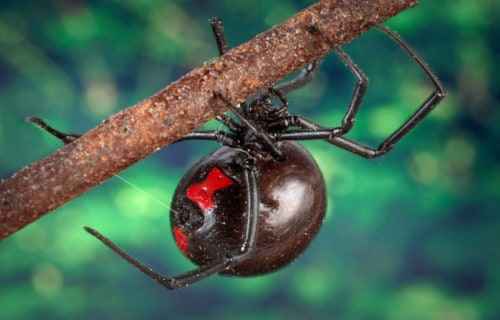
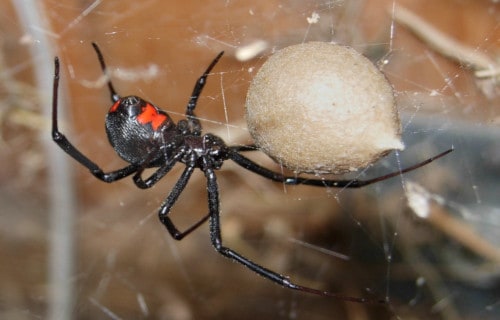
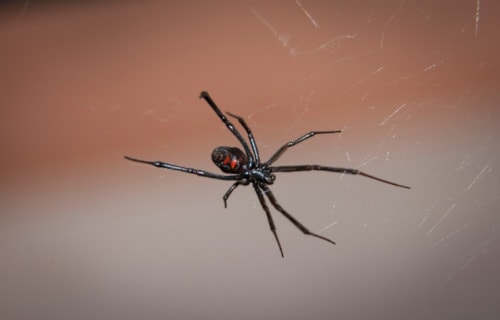
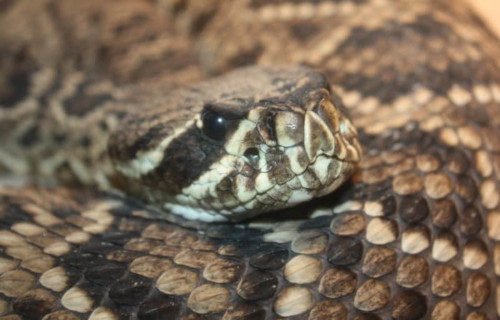
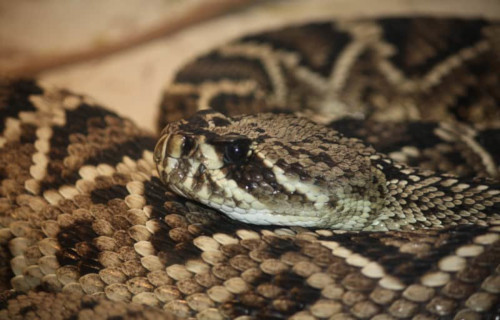
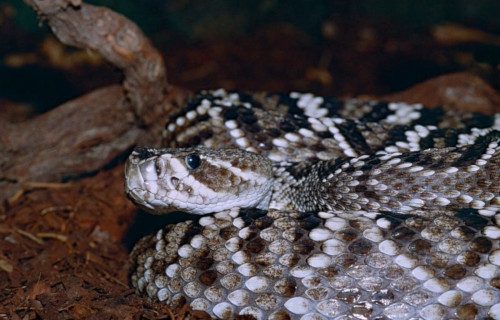

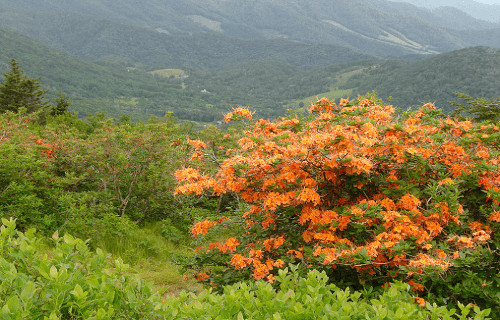
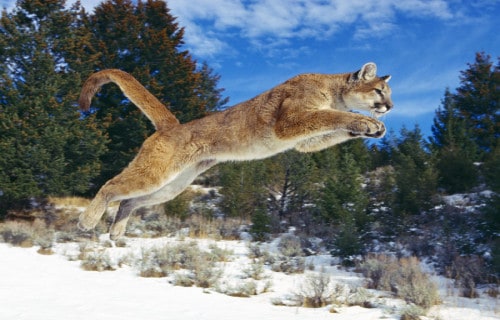

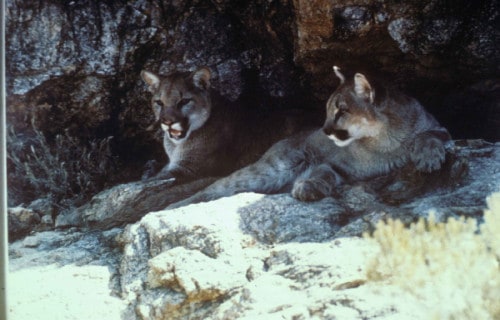
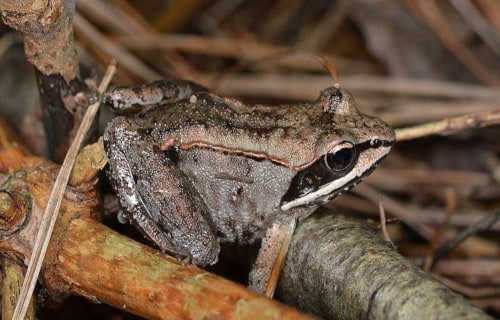
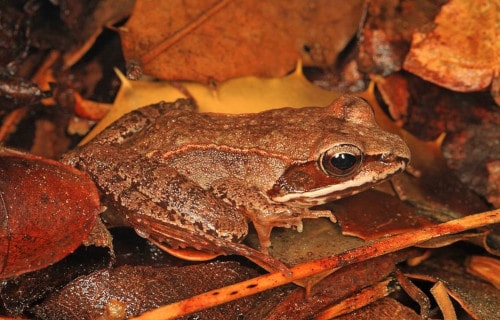
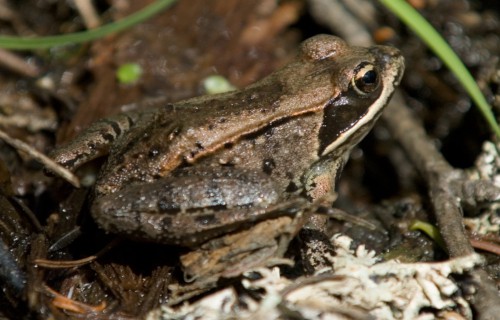









Leave a Reply